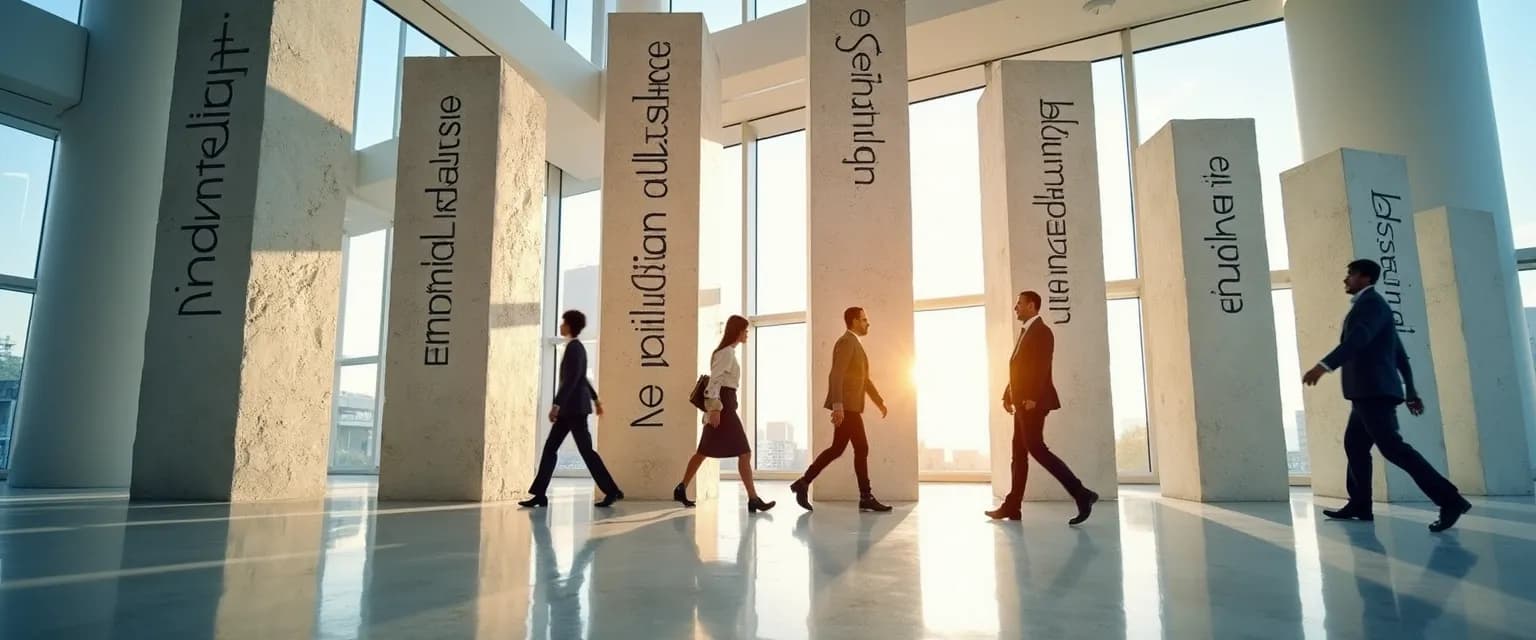7 Pillars to Define Resilience in the Workplace for Lasting Success
When we define resilience in the workplace, we often think of simply bouncing back from setbacks. But true workplace resilience runs much deeper. Today's dynamic business environment demands a more nuanced understanding of what it means to build sustainable resilience—for both individuals and organizations. Rather than just recovering from challenges, modern resilience encompasses proactive adaptation, collective strength, and continuous evolution in the face of uncertainty.
To best define resilience in the workplace, we need to recognize it as a multidimensional capability that directly impacts organizational success and employee wellbeing. Research shows that resilient organizations outperform their peers by up to 30% during economic downturns. Meanwhile, resilient employees experience 60% less burnout and demonstrate 25% higher productivity. Let's explore seven foundational pillars that comprehensively define resilience in the workplace beyond traditional definitions.
The First 3 Pillars That Define Resilience in the Workplace
1. Purpose Alignment
When personal values align with organizational mission, resilience naturally strengthens. Employees who find meaning in their work are 4.6 times more likely to demonstrate resilience during challenging periods. To cultivate purpose alignment, organizations can create clear connections between individual roles and broader company impact, while individuals can reflect on how their work contributes to personal values and breaking self-limiting beliefs.
2. Psychological Safety
Environments where team members feel safe to take risks, express ideas, and even fail without fear of punishment create the foundation for collective resilience. Google's Project Aristotle identified psychological safety as the most critical factor in high-performing teams. Leaders define resilience in the workplace by modeling vulnerability, encouraging diverse viewpoints, and responding constructively to mistakes.
3. Continuous Adaptation
Rather than resisting change, resilient workplaces embrace it as opportunity. This pillar involves developing flexible mindsets that view disruption as a catalyst for innovation. Organizations that regularly practice scenario planning and encourage experiential learning build adaptive capacity. Individuals strengthen this aspect of resilience by pursuing new skills and building momentum through small wins.
4 Advanced Pillars to Define Workplace Resilience for Teams
4. Collective Intelligence
Diverse perspectives create stronger solutions to complex problems. When teams leverage varied backgrounds, expertise, and thinking styles, they develop more innovative approaches to challenges. Organizations define resilience in the workplace by creating cross-functional teams and establishing knowledge-sharing platforms. Team members contribute by actively seeking input from colleagues with different viewpoints and embracing constructive debate.
5. Resource Optimization
Sustainable resilience requires balancing resources—both material and human. This means strategic allocation of time, energy, attention, and capital. Organizations build this pillar by implementing workload management systems and encouraging energy management strategies. Individuals strengthen resilience by prioritizing high-impact activities and establishing boundaries that prevent depletion.
6. Ethical Decision-Making
Trust-based resilience emerges from consistent values-aligned choices. When organizations demonstrate ethical leadership during crises, they build deeper stakeholder loyalty and employee commitment. This pillar involves creating transparent decision frameworks that consider long-term impact on all stakeholders. Individual contributors define resilience in the workplace by advocating for ethical considerations in team decisions.
7. Work-Life Harmony
The final pillar recognizes that sustainable resilience requires integration between professional demands and personal wellbeing. Rather than promoting burnout-inducing hustle culture, resilient organizations establish norms that support recovery and renewal. Practical applications include flexible work arrangements, mental health resources, and leadership modeling of healthy boundaries.
When we comprehensively define resilience in the workplace through these seven pillars, we create environments where both individuals and organizations thrive through challenges rather than merely survive them. This expanded definition transforms resilience from a reactive trait to a proactive capability that fuels sustainable success.
The most effective way to define resilience in the workplace is to view it as an ongoing practice rather than a fixed trait. By intentionally cultivating these seven pillars—purpose alignment, psychological safety, continuous adaptation, collective intelligence, resource optimization, ethical decision-making, and work-life harmony—organizations build the capacity to not just withstand disruption but emerge stronger through it. The question isn't whether challenges will arise, but how well-equipped we are to transform them into opportunities for growth.




